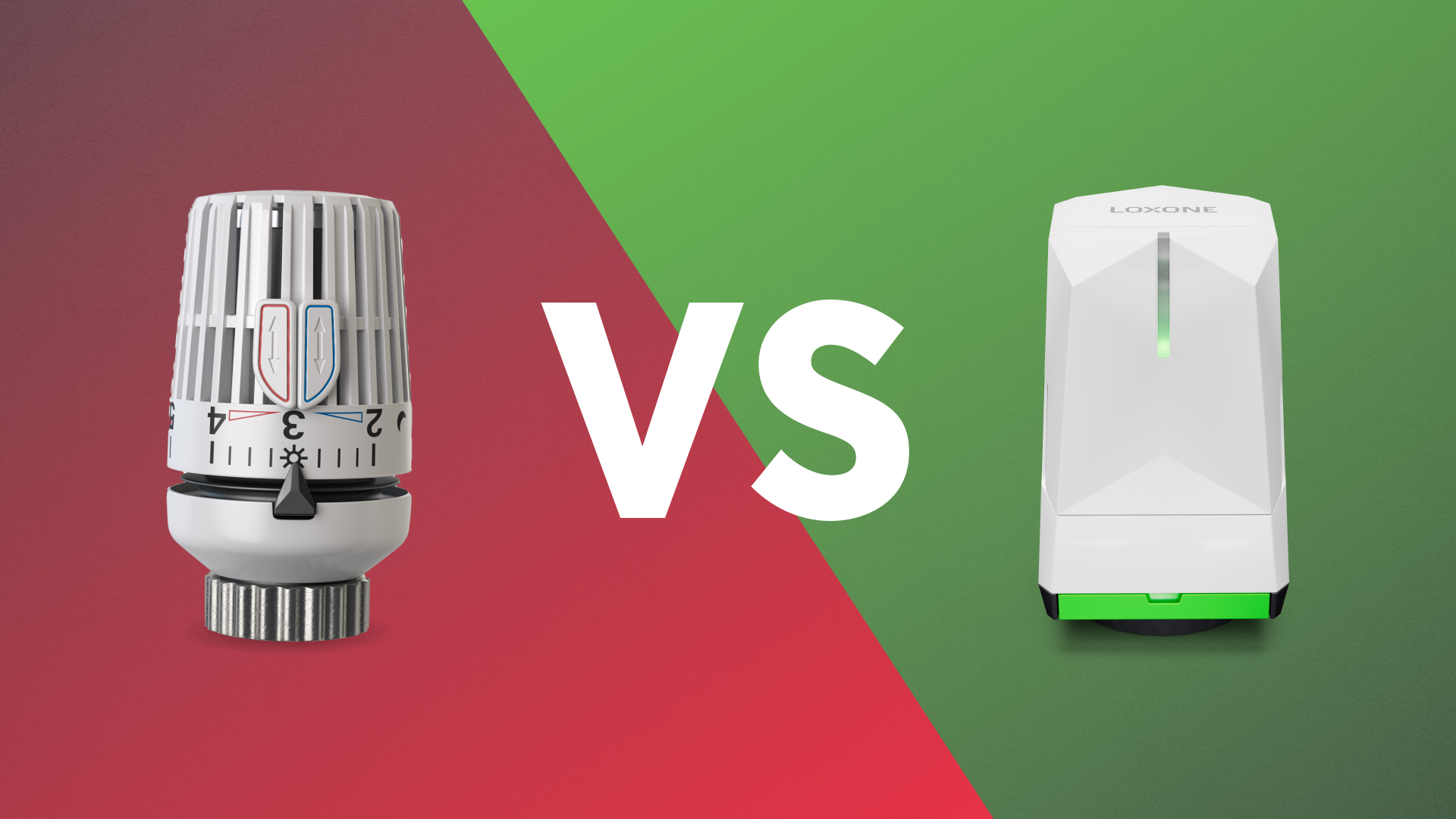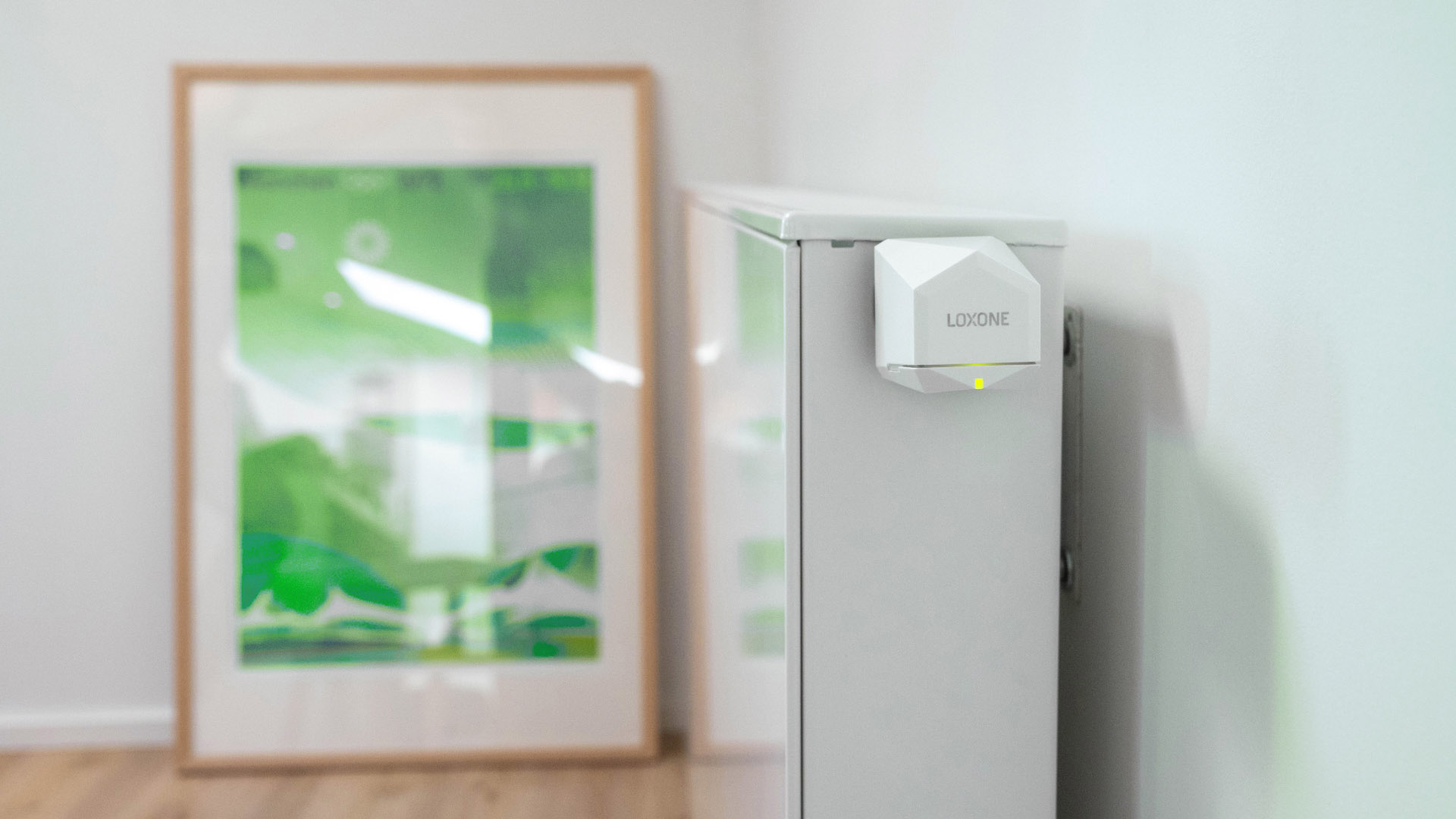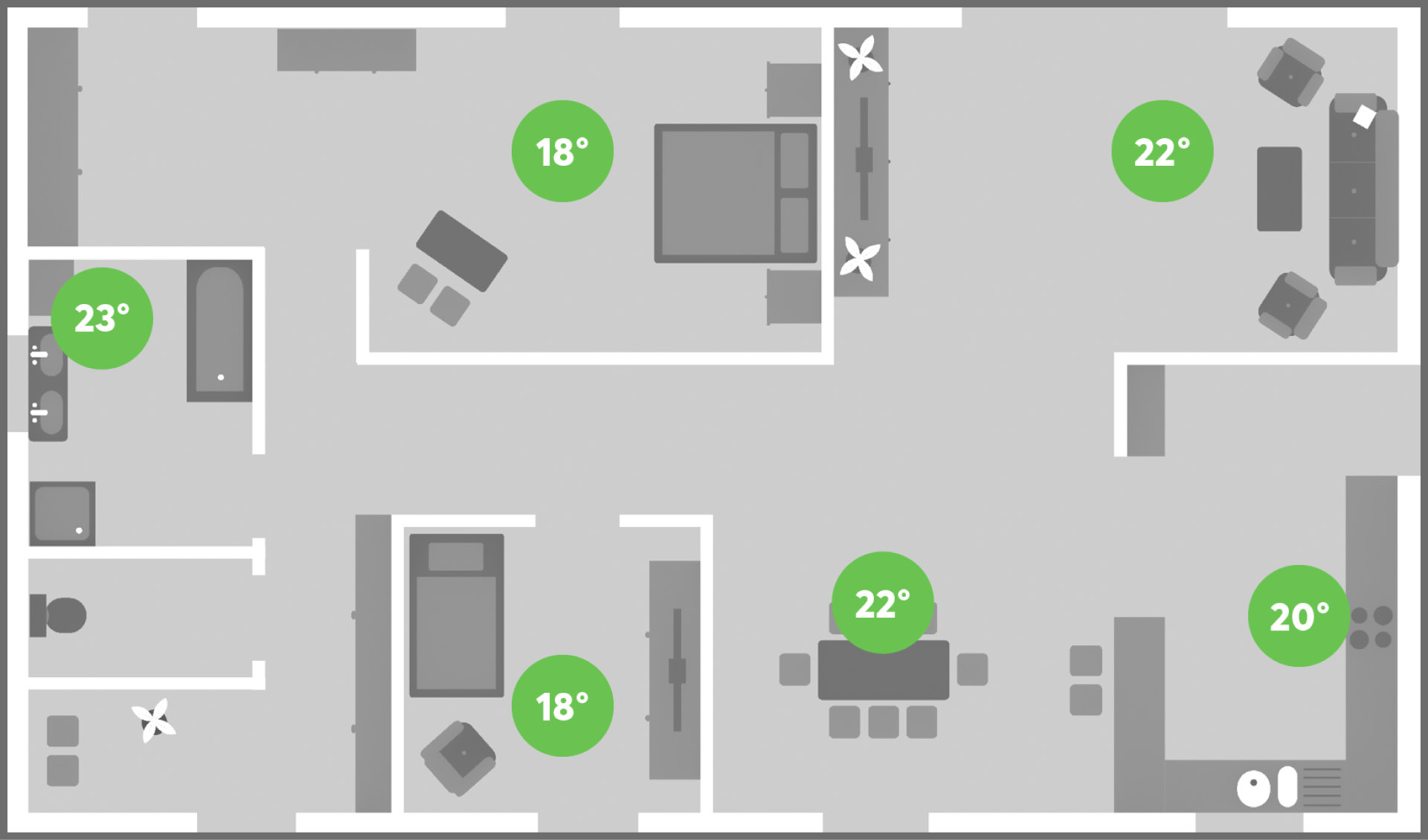

Loxone Magazin / Stories & Inspiration / In Action: €3,000 Less Heating Costs per Year Thanks to Smart Retrofitting
In Action: €3,000 Less Heating Costs per Year Thanks to Smart Retrofitting
Reading Time
Date
8 minutes
29. November 2024
Is it worth retrofitting an old building with smart technology? We took a closer look at a real-life example in which the gas heating system was intelligently automated. The result? 58% less heating costs!
The circumstances: High energy consumption in old buildings
The real-life example is a single-family house in Switzerland. Nearly 200m² spread across three floors. As a classic retrofitting project, the homeowner is transforming his conventional house into a smart home step by step. One of the key aspects of this project: energy savings.
Statistically, around 80% of the energy consumption in a single-family house is used for room heating and hot water preparation.1 Therefore, the initial focus was on optimizing the heating system: a gas heating system operates the radiators and provides hot water. The annual operating costs were approximately €6,420.
On average, about 80% of this is used for heating. 20% is consumed for hot water preparation for activities such as showering, washing dishes, etc.
Based on this assumption, the following values result:
| Total gas | 100% | €6,420 |
| Heating | 80% | €5,136 |
| Hot water | 20% | €1,284 |
Notes on the calculations
For the best possible comparability, we used the average gas price in Switzerland between August 2021 and August 2024 for the calculation. This is 15.37 centimes per kWh.2 To keep the calculation simple, we rounded the price to 15 centimes per kWh. The consumption before the retrofit was above average, at 40,000 kWh of natural gas per year. The calculation was initially done in Swiss francs. For better international comprehensibility, the values were then converted from francs to euros using a conversion factor of 1.07.3
Low costs – High savings
In the area of heating control, the homeowner was able to achieve significant cost savings with very simple means. The list of hardware specifically used for individual room control is short:
- Loxone Valve Actuators on all radiators replaced the previous Danfoss thermostat heads
- Window contacts were installed on all windows
- All interior doors now have door contacts
The price of the Loxone components used amounted to approximately €3,000.

With the Loxone Valve Actuator Air, radiators are integrated into a smart building in just a few simple steps.
Additionally, some simple logics were defined in the Loxone Config:
- The single-family house has a large, open staircase. The door contacts register whenever one of the interior doors is open for more than 15 minutes. The heating in the respective room is automatically lowered. Attempting to heat the staircase in addition to the room would lead to inefficient energy loss by each radiator.
- When a window in the room is opened, the corresponding radiator is also lowered. This prevents “heating out the window.”
- The probably most important aspect: A time-dependent comfort temperature was defined for all rooms. If no one is home, the heating doesn’t need to be on. Therefore, from Monday to Friday, the heating remains off from 8:00 AM to 5:00 PM.

Thanks to individual room control, the ideal temperature can be set for each room in smart buildings. This ensures comfort and efficiency.
Even these simple rules lead to a reduction in heating costs. However, the intelligent heating control made by Loxone is highly advanced and contributes even more to reducing heating costs, all without the homeowner having to do anything.
It ensures that the desired temperature in the room is reached as energy-efficiently as possible. It knows exactly when to start heating in order to achieve the desired comfort temperature at the right time and continuously learns from this process.
Once the desired temperature is achieved, it is kept stable. The so-called hysteresis is minimized, which refers to temperature fluctuations that require significant energy to correct.
€3,000 less in heating costs – Every year!
Through these simple measures, the homeowner has managed to reduce annual gas costs by nearly €3,000. No changes were made to the hot water preparation, and according to the homeowner, there was no significant change in water usage behavior. Therefore, it can be assumed that this savings was achieved solely in the area of room heating.
This results in the following calculation:
| Annual gas heating costs before the retrofit | €5,136 |
| Annual gas heating costs since the retrofit | €2,140 |
| Savings per year | €2,996 |
This corresponds to a whopping 58% saving just on heating costs!

Was it the weather? Weather adjustment for a fair comparison
The annual energy consumption for space heating is highly dependent on the weather. When it’s warmer outside, less heating energy is needed.
Heating degree days (HDD) are a tool used to determine the weather-dependent energy demand for heating. They refer to the difference between the average desired indoor temperature (20°C) and the outdoor temperature.
For the weather adjustment in our example, we refer to data from the city of Zurich. The heating degree days (HDD) in 2022 were 2775, while in 2023 they were 2908.4 As a result, slightly more heating energy was required in 2023 for the same result compared to the previous year.
From this data, a correction factor of 0.954 is derived. The adjusted heating costs for 2023 were therefore €2,041. The weather-corrected savings are even higher than the actual savings, amounting to €3,095.
| Annual gas heating costs before the retrofit | €5,136 |
| Weather-adjusted gas heating costs since the retrofit | €2,041 |
| Weather-adjusted savings per year | €3,095 |
Smart retrofit: Payback in just one year
This practical example clearly demonstrates the energy-saving potential that can be unlocked with smart technology in your home or commercial property. With an investment of just a few thousand euros, the homeowner saves €3,000 annually thanks to Loxone.
The costs for the smart retrofit were therefore paid off within the first year. Thanks to individual room control and demand-based heating, the heating system now uses less than half the gas and is more sustainable and efficient than ever before.
Yes, the initial gas consumption in this example was above average. However, with smart building automation, it is possible to save 50% or more of heating costs in almost any building.
Sources:
1: https://www.umweltbundesamt.de/daten/private-haushalte-konsum/wohnen/energieverbrauch-privater-haushalte
2: https://de.statista.com/statistik/daten/studie/1023989/umfrage/preis-fuer-gasl-in-der-schweiz-nach-verbrauchertyp/
3: https://g.co/finance/CHF-EUR
4: https://www.stadt-zuerich.ch/gud/de/index/umwelt_energie/energie-in-zahlen/heizgradtage.html
Interested?
If you have any questions, contact us or become a partner in under two minutes by registering directly - all by yourself!
Do you have any questions?
Feel free to contact us. Our expert advisors will be more than happy to help!
Become a Loxone Partner
Become a Loxone Partner in just 2 minutes - without any risk or hidden costs!